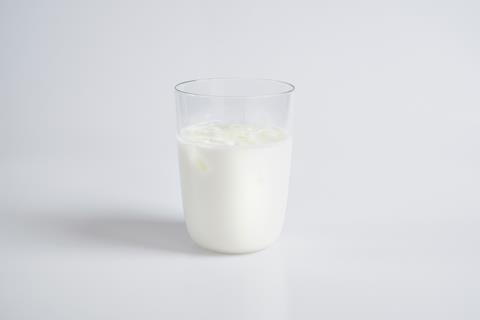
Is this the end of cheap milk for UK consumers? Branded milk is already 3% more expensive in the chiller than last year, while the average price of dairy drinks has soared 6.1%.
Now, rising input costs and inflation gallop could see prices rise far higher. Indeed, agricultural consultancy Kite warned in October that consumers would be forcibly taught the true cost of a pint of milk.
It said “significant cost inflation” meant shoppers would have to swallow higher rsps or see a “migration of milk supply to higher-value export markets”.
Susie Stannard, senior consumer insight analyst at AHDB, backs up Kite’s claim. “As input costs continue to rise this will continue to put pressure on retail prices,” she says.
The effects are increasingly apparent in the milk sector, which has gained £25.2m entirely due to price rises in the past year.
Freshways, for instance, will increase its farmgate milk price by a minimum of three pence per litre from the start of next year – “in recognition of escalating farm costs of production”.
At Crediton Dairy, head of sales & marketing Nick Bartlett points to “unprecedented levels of inflation in terms of input costs. It feels like every week there’s something else that’s going up in price. The ability to push back is far less than it would have been historically – and the supply chain is a big part of that.
“We’ve tried to become more efficient in our supply chain,” he adds. “And we’ve taken a margin hit. Like with other manufacturers, that won’t be sustainable forever.”
For now, price rises don’t appear to have halted the category’s top names. In plain milk, for instance, Cravendale and Alpro continue to lead the pack with solid value growth of 15.3% and 4.0% respectively, backed by rising volumes. And brands are growing volumes overall – despite a 3.2% price rise – while own label is in 1.7% decline.
“This may have been due to consumers looking for superior shelf life earlier in the pandemic when trying to minimise trips to the shop,” says Stannard. She predicts performances may level out as increasing economic pressures make shoppers less willing to trade up to branded milk in coming months.
Meanwhile, in flavoured milk, the big winners have been those capitalising on major consumer trends like chilled coffee. Starbucks is up 33.3% and leading the field, buoyed by big brand recognition and Insta-ready appeal. The return of on-the-go occasions also helped drive RTD sales.
“Consumption habits have changed notably over the past 18 months,” says Laura Scott, senior commercial manager for Starbucks at Arla Foods UK.
“Even though fewer shoppers were picking up drinks for on-the-go initially, they have now begun buying into the category more frequently and in larger volumes, with in-home consumption growing and 1.3 million more shoppers buying into the category over the last year,” Scott adds.
Winning innovation
At Crediton Dairy, its recently revamped Arctic Iced Coffee range has grown even faster in percentage terms than Starbucks – albeit from a smaller base. It’s more than doubled its value and is now worth £15.1m, having successfully tapped at-home consumption last year with a one-litre format.
“When we launched the format, it was a genuine first for the category in terms of a proper sharing option,” says Jo Taylor, brand manager at Crediton Dairy.
“There’s momentum in the iced coffee category, and as long as there’s innovation and products that meet the consumers’ needs they’ll continue to buy into it,” she adds.
Similarly, Yazoo has also seen larger formats spur growth, says brand manager Maren Fuhrich. Its 12.3% value gain was “driven largely by the take-home packs”.
“This trend is seen most clearly through the grocery channel, where sharing packs have grown 11.8% specifically”, she adds.
“As the market-leading brand, Yazoo’s performance both reflects and drives this trend: our large packs have grown by 76.0% and single serve packs by 19.6%.”
Limited-edition packs, which the brand has released every year since 2018, have also driven interest. The latest – ‘Jaffalicious’ Choc Orange – plays into the fad for mashing up drinks and confectionery to create something new. This kind of canny NPD is key to creating standout, explains Mathew Fleming, client services manager at NielsenIQ.
“The brands seeing the biggest declines are primarily those traditional flavoured milkshake brands, such as Frijj (down 10.3%), which aren’t tapping new trends and have seen distribution losses as a result,” he says.
At least the upcoming clampdown on HFSS promotions is unlikely to be a source of further stress for those brands, which have largely reformulated to cut sugar.
And it could turn out to be good news for the health-led drinking yoghurt category, which has already amassed an extra £39.8m this year. Danone’s Actimel was the biggest winner, gaining an extra £22.4m alone.
Now that’s some healthy growth.
Top Launch 2021
Wunda | Nestlé
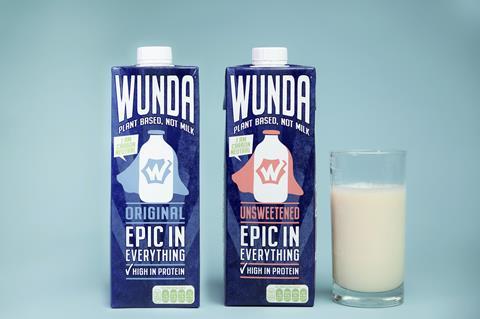
Nestlé jumped on the milk alternatives bandwagon in June with the UK launch of Wunda, following a successful rollout across Europe earlier in the year. Made from yellow split peas, the drink is available in two ambient variants: Original and Unsweetened. Pitched as versatile and “the closest thing to milk”, Wunda is also certified carbon neutral by the UK Carbon Trust. Not bad for a product that was developed in just six months, as part of Nestlé’s R&D Accelerator initiative.
The Grocer’s Top Products Survey 2021: who’s up, who’s down – and our overview of the key trends

Covid, Brexit costs and shortages in labour and material have caused chaos in grocery this year. Which sectors are best placed to deal with the inflationary storm on the horizon in 2022?
- 1
- 2
- 3
- 4
- 5
- 6
- 7
- 8
- 9
- 10
- 11
- 12
- 13
- 14
- 15
- 16
- 17
 Currently
reading
Currently
reading
Dairy drinks 2021: rising input costs driving up milk prices
- 19
- 20
- 21
- 22
- 23
- 24
- 25
- 26
- 27
- 28
- 29
- 30
- 31
- 32
- 33
- 34
- 35
- 36
- 37
- 38
- 39
- 40
- 41
- 42
- 43
- 44
- 45
- 46
- 47
- 48
- 49








































































































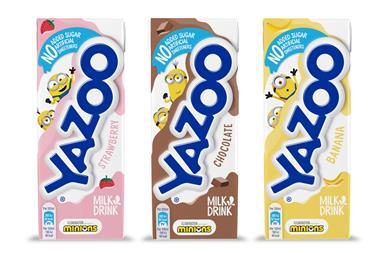

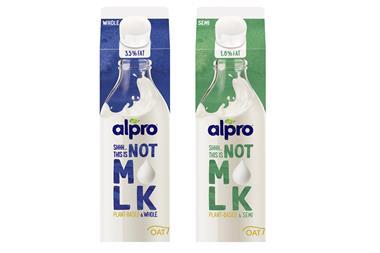
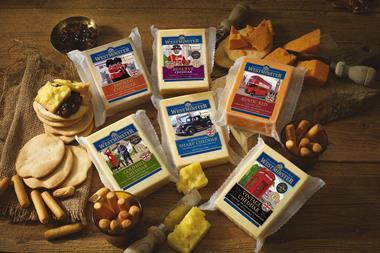
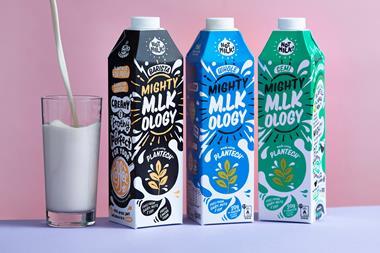







No comments yet